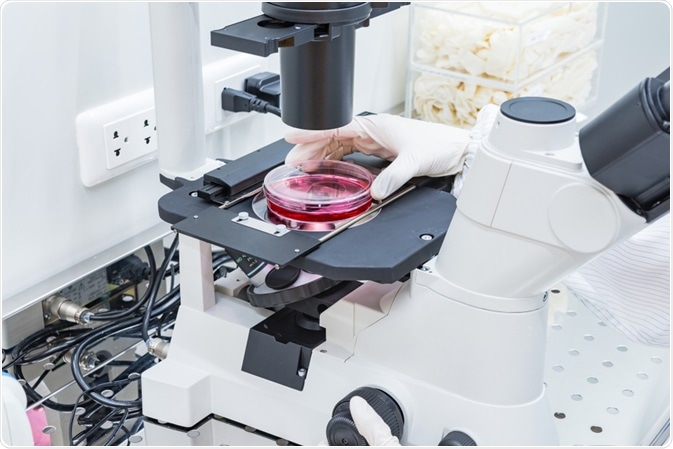In certain fields, such as biotechnology and medicine, indoor environments with specified, minimal levels of particulate or contaminant matter are often essential. Such sterile environments with stringent control of various room parameters are also known as cleanrooms.
 warut pothikit | Shutterstock
warut pothikit | Shutterstock
What are cleanrooms?
Cleanrooms are closed spaces that are built with a particular use in mind. They are designed to allow control over environmental contaminants which may compromise the work being carried out in the cleanroom.
Cleanrooms are often required in the manufacture of electronic hardware, such as integrated circuits and hard drives, but it may also be used in biology and medicine, where the environment may need to be free from bacteria, viruses, fungal spores, or other potential pathogens.
Fundamental requirements of a cleanroom
There are four specified requirements of a clean room. First and foremost, there should be no entry of the contaminants from outside to inside. Secondly, the equipment present inside a cleanroom should not be a source of dust or other contaminants due to friction, chemical or biological reactions.
Third, there should be no accumulation of contaminants in the room. And fourth, the contaminants originally present in the room should have been eliminated to the greatest extent. These measures have been given in the Federal industry standard 209 (FS 209E) and ISO 14644-1, the latter slowly replacing the former regarding the norm.
Filtration is the critical step to maintain the integrity of a cleanroom. All the air that enters the cleanroom needs to be filtered using special filters. The most common filters used in cleanrooms are high-efficiency particulate air (HEPA) filter and ultra-low penetration air (ULPA) filter.
What are the sources of contamination?
Studies show that the contamination principally emerges from five sources:
- Fomites: walls, floors, ceilings, paint, and coatings, constriction material, room air and vents, spills, and leaks.
- People: skin flakes and oil, cosmetics and perfume, spittle, clothing related debris, and hair.
- Fluids: particulate matter, bacteria, moisture, floor coatings, cleaning chemicals, deionized water, etc.
- The tools that are present in the cleanroom may generate contaminants due to friction and wear, lubricants, emissions, vibrations, brooms, mops, and dusters.
- Finally, various products that are generated in the cleanroom may also contribute to contaminants, most notably silicon chips, quartz flakes, cleanroom debris, aluminum particles, etc.
Classification of cleanroom
The classification of a cleanroom is based on the maximum size of the particulate matter and a maximum number of particles that are allowed inside the cleanroom per unit volume. For biotic matter, this is described in terms of microbes per cubic meter or molecules per cubic meter.
- Class 1: In this class, up to 35 particles of size 0.1 µm are allowed, and only one particle of size 0.5 µm are allowed.
- Class 10: In this class, up to 350 particles of size 0.1 µm are allowed, and ten particles of size 0.5 µm are allowed.
- Class 100: In this class, up to 3500 particles of size 0.1 µm are allowed, and 100 particles of size 0.5 µm are allowed.
- Class 1000: In this class, up to 1000 particles of size 0.5 µm are allowed, and seven particles of size 5 µm are allowed.
- Class 10,000: In this class, up to 10,000 particles of size 0.5 µm are allowed, and 70 particles of size 5 µm are allowed.
- Class 100,000: In this class, up to 100,000 particles of size 0.5 µm are allowed, and 700 particles of size 5 µm are allowed.
Thus, the class of a cleanroom is based on the number of particles sized 0.5 µm that are permitted. Classes 1 and 10 are used during the production of electronics, such as integrated circuits. Class 100 is used during the production of medical implants and photo labs. Class 10,000 is used in hospital operation theatres and TV tubes. Finally, class 100,000 is used during the manufacture of ball bearings.
Further Reading
Last Updated: Mar 28, 2019